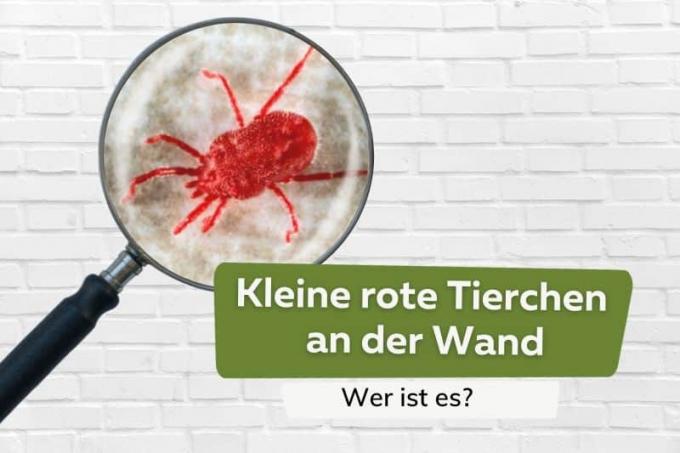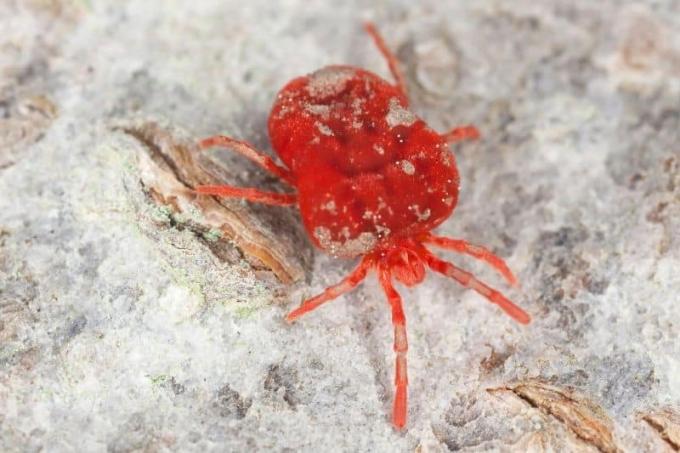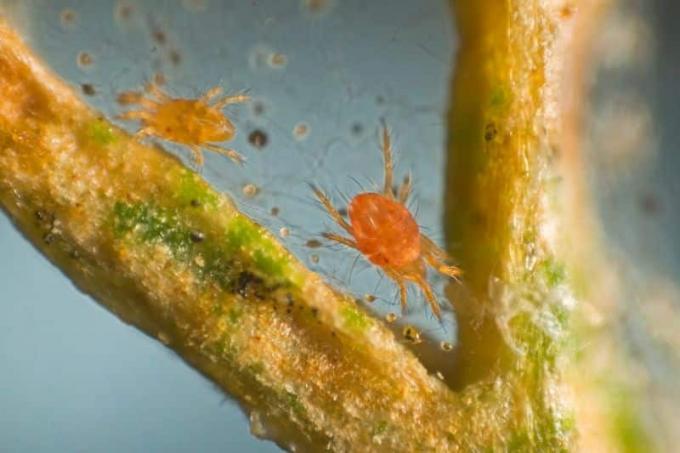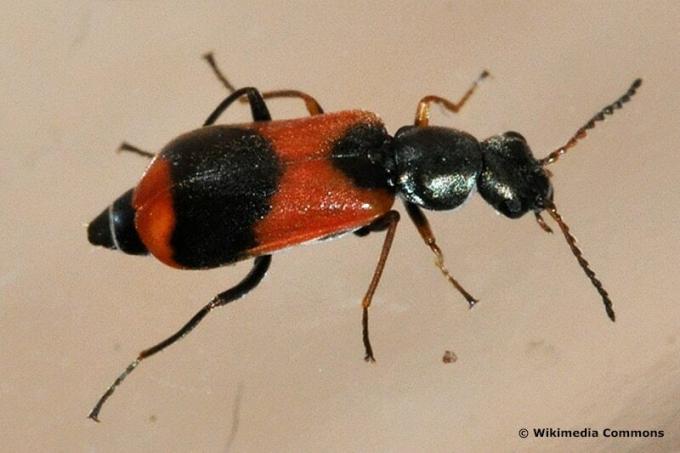
Small red animals that crawl on the wall or on the floor are usually harmless to humans. When seen in large numbers, however, the sight of them can trigger disgust.
In a nutshell
- Red velvet mite as prime suspect
- considered beneficial in the garden
- leaves red stains when crushed
- Use water jet in case of heavy impact
Table of Contents
- Red velvet mite
- Red Spider
- head beetle
- frequently asked Questions
Red velvet mite
The red velvet mite (Trombidium holosericeum) is a land and plant mite (Trombidiidae). The little animals are widespread and can be found almost everywhere. If the sun is shining, you can see them on the ground, on walls or on walls.

Recognize
- arachnids up to four millimeters long
- usually perceived as red dots with the naked eye
- soft-skinned body with scarlet hairs
- lay front legs
- scissor-like jaws
- relatively large head
Get rid of
Since the red velvet mite Predatorily fed on insect eggs and other small animals, they are among the beneficial insects in the garden. If the infestation on the terrace or balcony becomes too severe, it is usually sufficient to spray it off the wall with a garden hose.
In living rooms, it helps to increase the humidity, since the critters do not like humid environments. You should also check your houseplants, whose sap serves as a substitute for food for the mites indoors, and if necessary, water them. shower off Is the infestation If this is not to be contained, you should seek professional help as arachnid droppings can cause allergies or asthma if spread in large numbers.
Tip: Avoid crushing the little creatures, as this can lead to unsightly red spots that are difficult to remove.
Red Spider
The red spider (Panonychus ulmi) is not a spider but belongs to the spider mite family (Tetranychidae). In contrast to the red velvet mite, this little animal is a pest that usually stays on the host plant, but occasionally also on it balcony or terrace crawling around.

Recognize
- about half a millimeter in size
- crimson coloring
- plump physique
Fight
As with the red velvet mite, water is also an effective measure for the red spider when the small animals are on the floor or on the wall. If the fruit tree spider mites, as the tiny pests are also called, have nested on a plant, the only thing that helps is to cut it back radically.
Tip: Although the fruit tree spider mite is smaller than the red velvet mite, the two animals are often confused. Therefore, before you initiate measures to combat it, you should check who it is.
head beetle
Of the 3,000 species worldwide, 43 species of earworms are native to Germany. The species Anthocomus equestris is usually found in apartments. The adult beetles are black. The elytra of about three millimeters in size head beetle are red to yellow with a black spot. The tiny beetle larvae are perceived as small red animals. The larvae are rarely found on the wall, as they develop in the substrate of indoor plants and feed there predatory.

Get rid of
If the larvae have developed into adult beetles, it is usually sufficient to open the windows to get rid of the animals.
frequently asked Questions
Since the little red animals avoid walking over glass surfaces, a glass barrier in front of windows and patio/balcony doors is a good idea. In addition to glass blocks, a glass barrier made of bottles or glasses should also prevent the mites from entering the apartment.
Whether the little red animals are disease carriers cannot be conclusively judged. It is often read that the red velvet mite can transmit Lyme disease. The counter-argument is that their mouthparts are too weak to penetrate human skin.
In the garden, the red velvet mite is a soil conditioner. Since it also feeds on fungi and bacteria, the small red animals contribute to the formation of humus.



